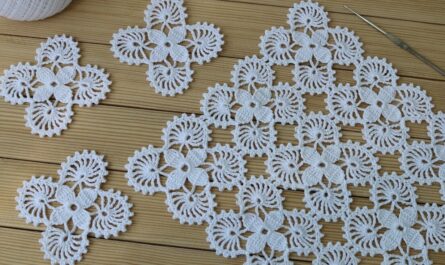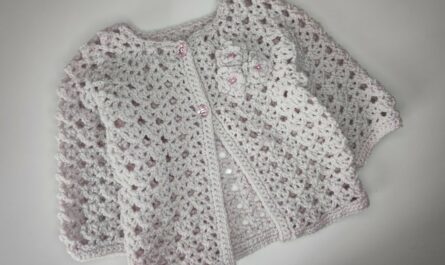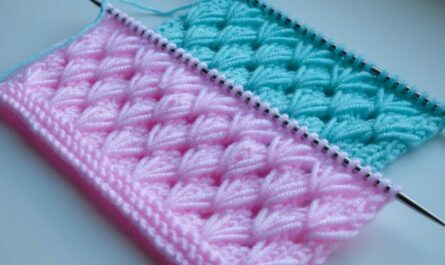There’s nothing quite as heartwarming as seeing a little one adorned in a garment made with love. A handmade baby dress is not just an outfit; it’s a hug made of yarn, a cherished gift, and a delightful expression of care. If you’re new to crocheting garments or simply looking for a quick and satisfying project, the “SUPER EASY” baby dress is your perfect starting point.
This guide is designed to demystify garment making, focusing on straightforward shapes, minimal shaping, and basic stitches that build confidence without sacrificing cuteness. You’ll learn the conceptual steps to create a charming, comfortable, and customizable dress for the special baby in your life.
Why Crochet a Super Easy Baby Dress?
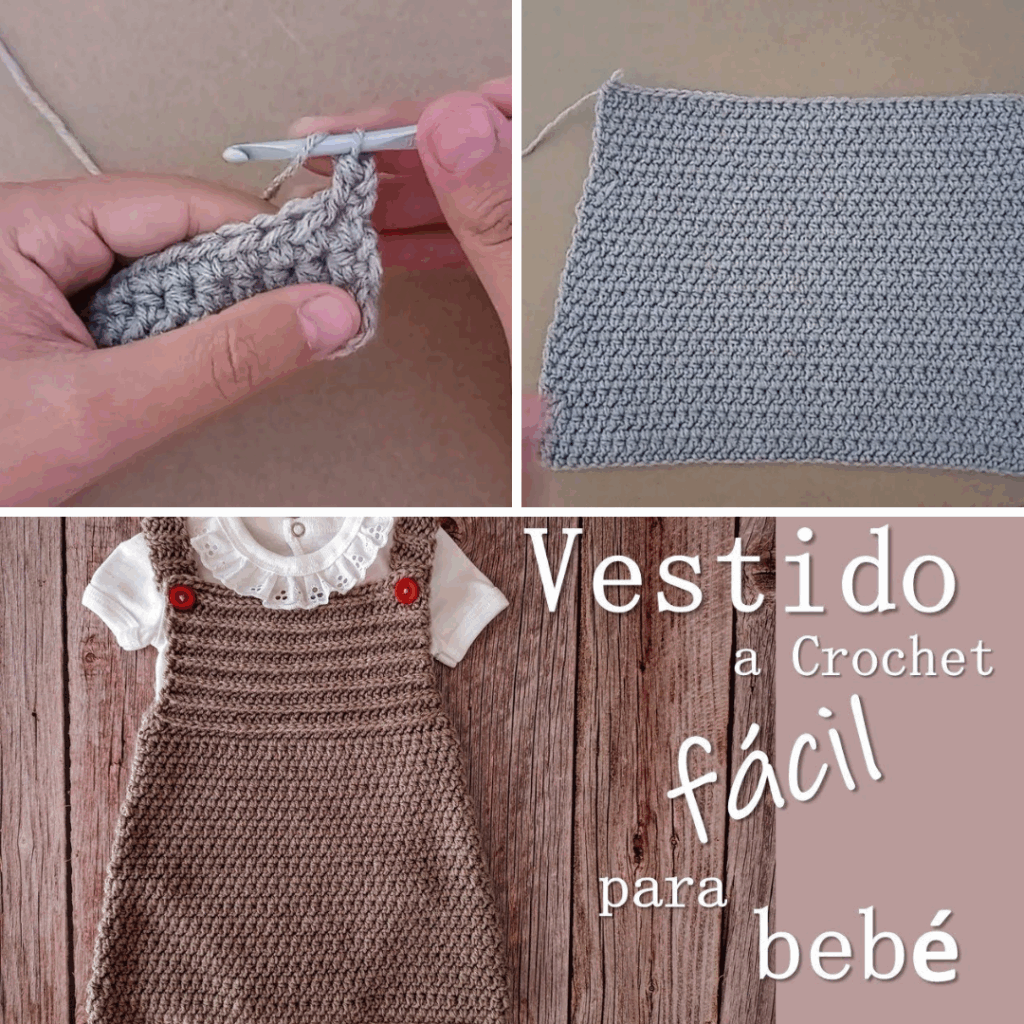
Choosing a simplified baby dress pattern offers unique advantages for both the maker and the wearer:
- Beginner-Friendly Garment: This is an excellent “first wearable” project. Its smaller size and less complex shaping make it far more approachable than adult garments, building essential skills and confidence for future, larger projects.
- Quick & Gratifying: Simple baby dresses work up remarkably fast. You’ll see tangible progress quickly, leading to a satisfying sense of accomplishment in a short amount of time.
- Perfect for Gifting: A handmade baby dress is always a thoughtful, personalized, and deeply appreciated gift for baby showers, birthdays, or just because.
- Customizable Cuteness: Even with simple stitches, the possibilities for personalization are endless. Play with an array of colors, add simple texture through basic stitch combinations, or embellish with bows, flowers, or appliqués.
- Practicality & Comfort: You have complete control over yarn choice, allowing you to select super-soft, hypoallergenic, and machine-washable fibers ideal for a baby’s delicate skin and busy parents.
- Heirloom Potential: A beautiful handmade dress often transcends its initial use, becoming a treasured keepsake passed down through generations.
Understanding the “Super Easy” Aesthetic: Yarn & Stitch Choices
The secret to a “super easy” baby dress lies in selecting the right yarn and focusing on simple, yet effective, stitch patterns and design elements.
Simplicity is Key
Think straightforward shapes like an A-line body or a simple straight silhouette, with minimal shaping around the neck and armholes. The construction will be designed to be as seamless or minimally seamed as possible.
Yarn Selection: The Foundation of Softness & Ease
Prioritize yarns that are incredibly soft, easy to work with, durable, and, most importantly, simple to care for.
- Weight:
- DK (Double Knitting, Category 3) or Worsted (Category 4): These are ideal for ease of handling, good stitch definition, and creating a comfortable fabric weight for most baby dresses.
- Sport (Category 2): Can be used for a lighter, more delicate fabric, but will require more stitches per inch.
- Fiber:
- Baby-Specific Acrylics: These are highly recommended. They are engineered to be ultra-soft, hypoallergenic, often anti-pilling, and crucially, machine washable and dryable – essential for baby clothes that need frequent cleaning.
- Superwash Merino Wool: Offers excellent softness, warmth, and breathability. Superwash varieties are treated to be machine washable, making them a practical choice for baby items.
- Cotton/Cotton Blends: Good for babies with very sensitive skin or for garments in warmer climates. They are breathable and offer good stitch definition but tend to be less elastic than wool or acrylic.
- Avoid: Any yarns that feel scratchy, are highly delicate (requiring hand-washing only), or are novelty yarns with small, attached pieces (like sequins or tiny beads) that could pose a choking hazard.
- Color: The choice is entirely yours – traditional pastels, vibrant brights, playful variegated yarns, or gender-neutral tones.
Stitch Patterns: Focus on Simplicity & Flow
The main goal is to choose stitches that are easy to master, work up quickly, and create a soft, flexible fabric for baby’s comfort.
- Recommended Easy Stitches:
- Half Double Crochet (HDC): A fantastic choice for a main body stitch. It works up quickly, creates a lovely drape, and provides good coverage.
- Double Crochet (DC): Even faster than HDC, creating a soft, slightly more open fabric. Great for quick projects.
- Single Crochet (SC): Excellent for dense, sturdy areas like necklines, edgings, or straps. If used for the entire dress, consider using a slightly larger hook to prevent stiffness.
- Simple Shell or V-stitch: These patterns, often created by working multiple stitches into a single stitch or chain space, add a touch of decorative flair without being overly complex.
- Avoid: Complex cables, intricate lace patterns requiring multiple stitch manipulations, or very dense stitches that would make the dress too stiff and uncomfortable for a baby.
Design Elements: Keep it Simple!
The charm of a super easy baby dress comes from its simplicity and the beauty of the yarn and basic stitches.
- Shape: An A-line silhouette (flares gently from the chest) is flattering and easy to achieve. A simple straight body is also very straightforward.
- Yoke: The top part of the dress (yoke) is often a simple round or square shape, where most of the increases for the dress’s width occur.
- Neckline: A wide neck opening is crucial for easy dressing over a baby’s head. Many easy patterns incorporate a small placket (an opening with buttons) at the back or shoulder for even greater ease.
- Sleeves: For a super easy dress, think sleeveless, very short flutter sleeves (achieved with a simple row of shells), or straightforward straight sleeves with minimal tapering.
- Closure: Buttons at the back or shoulder are common for neck openings. Some patterns might be designed with a wide enough neck that no closure is needed at all.
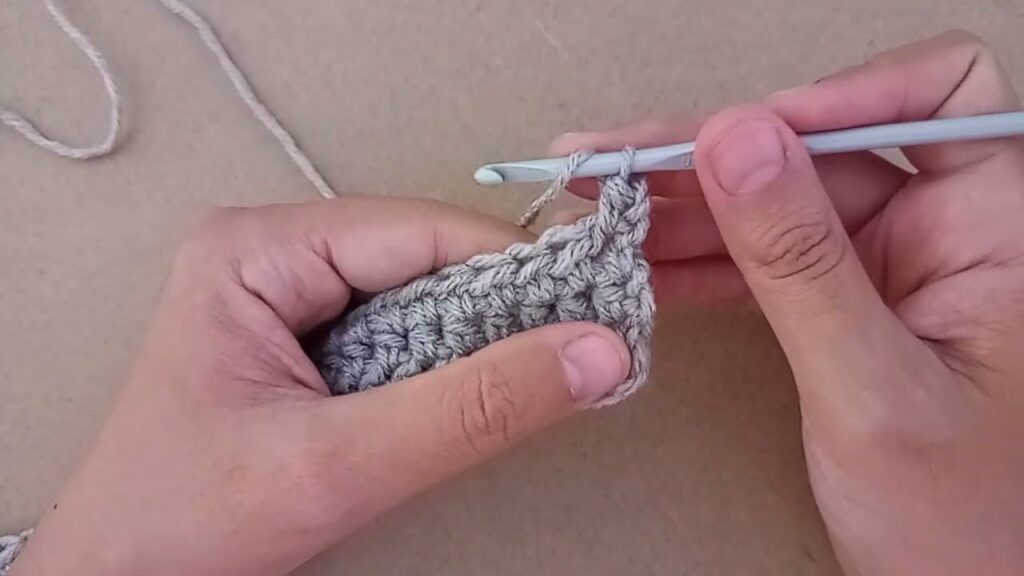
Planning Your Super Easy Baby Dress Project
Even for a “super easy” project, a little planning goes a long way to ensure a well-fitting and satisfying result.
- Size Selection:
- Crucial: Babies grow rapidly and vary greatly in size. While patterns are often categorized by age (e.g., 0-3 months, 3-6 months), it’s more accurate to use the baby’s current chest circumference as your primary guide.
- Key Measurements: Get the baby’s actual chest circumference, the desired dress length (from the top of the shoulder to where you want the hem to fall), and their head circumference (if the dress is a pullover with no neck opening).
- Ease: Choose a pattern that specifies comfortable positive ease (meaning the finished garment will be slightly larger than the baby’s body measurement) to allow for movement and some growth.
- Pattern Selection (ESSENTIAL!):
- Look specifically for patterns clearly labeled “beginner,” “easy,” or “fast baby dress.” Websites like Ravelry, Yarnspirations, and many crochet blogs offer excellent free and paid options.
- Look for: Clear, step-by-step instructions, minimal complex shaping, straightforward stitch repeats, CRITICALLY, comprehensive gauge information, and helpful photos or diagrams.
- Common Easy Construction Methods:
- Top-Down (Seamless): This is often the most recommended method for “super easy” baby garments. You start at the neck and work downwards, separating for the body and sleeves. This minimizes seaming, which is a huge time-saver and makes for a more comfortable garment.
- Two-Panel (Minimal Seam): You crochet a front panel and a back panel separately, then seam them together at the sides and shoulders. Sleeves are often added separately. Still relatively easy compared to complex adult garments.
- Gauge Swatch (NON-NEGOTIABLE!):
- This is the single most critical step in garment crocheting! For baby sizes, even a slight difference in gauge can lead to a significant difference in the final fit.
- Crochet a large swatch (at least 4×4 inches / 10×10 cm) using your chosen yarn and hook in the main stitch pattern of the dress.
- Wash and block your swatch exactly as you intend to wash and block the finished dress. This is vital to see how the yarn behaves (e.g., stretches, blooms, or slightly shrinks) after laundering, as this will affect the final fit and drape.
- Measure your stitches and rows per inch/cm accurately. If your gauge doesn’t match the pattern’s, adjust your hook size (go up for fewer stitches per inch, down for more stitches per inch) until it matches. A small gauge error will result in a large sizing error for the dress.
Materials You’ll Need
- Yarn: (As detailed in the “Aesthetic” section). Typically 1-3 skeins for a baby dress, depending on the size and chosen length. Always check your pattern’s yarn requirements.
- Crochet Hook(s): The size recommended by your pattern, adjusted based on your gauge swatch.
- Notions:
- Stitch Markers: Essential for marking the beginning of rounds (if working in the round), raglan lines (for top-down yokes), and button placement.
- Tapestry Needle: For neatly weaving in all yarn ends.
- Scissors.
- Measuring Tape: Crucial for checking your gauge and ensuring your dress is the correct dimensions as you work.
- Buttons/Snaps (if applicable): Choose sturdy, flat, baby-safe buttons with no small parts that could break off.
- Blocking Mats & T-pins (Highly Recommended): For professional shaping and setting of your finished garment.
Key Crochet Techniques for a Super Easy Baby Dress
You’ll primarily use basic stitches and straightforward shaping methods:
- Basic Stitches: Chain (ch), Slip Stitch (sl st), Single Crochet (sc), Half Double Crochet (hdc), Double Crochet (dc). These are the building blocks.
- Working in Rows & in the Round: Understanding when to work back and forth (for flat sections like a back opening) and when to work continuously in rounds (for the main body of the dress).
- Simple Increases: Often achieved by working two stitches into one stitch, or by creating chain spaces that are worked into on the next row/round to add width.
- Simple Decreases: Typically
sc2tog(single crochet two together),hdc2tog(half double crochet two together), ordc2tog(double crochet two together) to reduce stitch count for shaping. - Basic Edging/Ribbing (optional): A simple border of single crochet (SC) or working SC in the back loop only (SC in BLO) can provide a neat, slightly stretchy finish for necklines and cuffs.
- Buttonholes (if applicable): Simple chain-space buttonholes are common (e.g., chain a few stitches, skip a few stitches, then on the next row work into the chain space).
- Weaving in Ends: Crucial for a neat and safe finish on baby items.

Step-by-Step Construction (Conceptual Guide – Focus on Top-Down Seamless)
The top-down, seamless method is highly favored for “super easy” baby dresses due to its simplicity and minimal finishing.
- Preparation: Read your chosen pattern thoroughly. Make your gauge swatch (and wash/block it!). Gather all your yarn, hooks, and notions.
- Crochet the Yoke (Neckline Start):
- Begin by casting on the specified number of stitches (often with a foundation chain) for the neckline.
- Work the first few rows or rounds, following the pattern’s instructions for yoke shaping. This usually involves strategic increases at specific points (e.g., a “raglan” style yoke with four increase lines, or a circular yoke with increases evenly distributed).
- Back Opening (Placket): For easy dressing, many easy patterns will instruct you to work the first few rows of the yoke flat (back and forth) to create an opening for buttons. If so, you’ll incorporate simple buttonholes into one side of this opening as you go.
- Continue increasing the yoke until it reaches the desired circumference to fit comfortably around the baby’s chest and upper arm area.
- Separate Body & Sleeves:
- Once the yoke is complete, the pattern will instruct you to place the stitches designated for the sleeves onto stitch holders or a long piece of waste yarn.
- You’ll then join the front and back body sections together (often by chaining a few stitches under the arm to create the underarm space) to form the main part of the dress.
- Crochet the Body of the Dress:
- Continue working in the round (or flat, if your back opening continues down the entire length of the dress) for the desired length of the dress.
- Add a simple bottom border or edging (e.g., a few rows of single crochet, or a decorative shell stitch border) to the hem for a neat finish.
- Crochet the Sleeves (Optional):
- If your pattern includes sleeves (e.g., simple short sleeves or flutter sleeves), join your yarn at the center of the underarm of one set of held sleeve stitches.
- Work the sleeve in the round (or flat, then seam later) for the desired sleeve length. For a “super easy” dress, there will likely be minimal or no shaping for the sleeves.
- Add a simple cuff edging (e.g., a row of SC).
- Repeat for the second sleeve.
- Finishing:
- If you created a back opening/placket, complete it by adding any final border rows and securely sewing on baby-safe buttons, aligning them with the buttonholes.
- Weave in Ends & Block: Meticulously weave in all loose yarn ends using your tapestry needle. For baby items, ensure ends are very secure to prevent unraveling or hazards. Gently wash/wet and block the finished dress to even out stitches, enhance drape, and set the final shape.
Tips for Success
- Read the Pattern Meticulously: Even for “easy” patterns, read through all instructions before starting. Don’t skip steps or assume.
- Don’t Skip the Gauge Swatch! (Absolutely, truly essential for proper fit on a baby, who grows quickly).
- Use Stitch Markers! They are invaluable for marking the beginning of rounds, raglan lines, and button placement.
- Count Your Stitches! Regularly verify your stitch counts at the end of each row or round, especially after increases or decreases. Catching errors early saves significant time and frustration later.
- Choose Baby-Friendly Yarn: Always prioritize softness, durability, and washability.
- Secure Fasteners: If using buttons or snaps, sew them on extremely securely to prevent them from becoming choking hazards. Double-stitch them for extra peace of mind.
- Weave in Ends Meticulously: Loose yarn ends are not just untidy; they can be a potential hazard for babies.
- Blocking is Your Friend: It transforms crochet fabric, making stitches even, enhancing drape, and setting the final shape, giving your dress a professional and polished appearance.
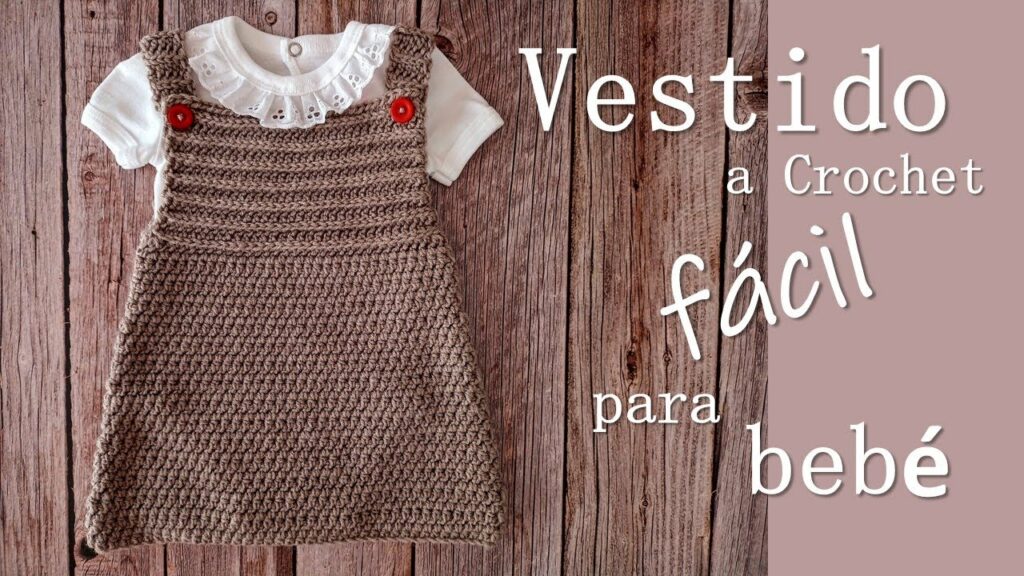
Caring for Your Crocheted Baby Dress
Proper care will ensure your handmade baby dress remains beautiful and comfortable for years to come:
- Follow Yarn Label Care Instructions Strictly: This is your primary guide for appropriate washing and drying methods for your specific yarn.
- Gentle Washing: Most crochet baby garments made with baby acrylics or superwash wool can be machine washed on a gentle or delicate cycle with cool water. For more delicate yarns, hand wash gently in cool water with a mild detergent.
- Reshape and Lay Flat to Dry: Gently squeeze out excess water (never wring or twist!). Reshape the dress back to its original dimensions and lay it flat on a clean towel or a mesh drying rack to air dry completely.
- Never Hang Wet: The weight of a wet crocheted garment will cause it to stretch and distort significantly if hung to dry.
Conclusion
Creating a “SUPER EASY” crochet baby dress is a wonderfully rewarding project, perfect for beginners and seasoned crocheters alike. It’s a chance to create something truly beautiful and unique, offering warmth, comfort, and undeniable cuteness to the little one who wears it. By focusing on simplicity and embracing the joy of each stitch, you’ll confidently create a cherished handmade garment that celebrates the magic of new beginnings. Happy crocheting!
Video Tutorial ;

